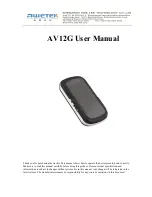
Flight Management System (FMS) for the Agusta AW139/AB139 Helicopter
A28--1146--181
REV 3 Mar 2009
6-61
Navigation
Honeywell International Inc. Do not copy without express permission of Honeywell.
POSITION SENSORS
One of the primary FMS tasks is to navigate the aircraft along a
predefined flight plan. To do this, the FMS receives navigation data from
various sensors on board the aircraft. From the available sensors, the
FMS determines the best navigational mode, and combination of
sensors, to give the most accurate aircraft position.
Navigation Modes
The priority of the navigation modes are based on the mode that
provides the lowest estimated position uncertainty (EPU). The
available navigation modes are as follows:
D
GPS
D
DME/DME
D
VOR/DME
D
AHRS (attitude and heading reference system)
D
Dead Reckoning
When GPS is used, other sensors are still monitored for position
differences from the FMS position. Other sensors do not contribute to
the FMS position unless GPS becomes unavailable or inaccurate.
When the DME/DME navigation mode is used, the FMS automatically
tunes the scanning DMEs to give the best position from DME/DME.
In VOR/DME mode, the bearing error increases with distance from the
navaid thus reducing the accuracy of the VOR/DME position as the
aircraft moves away from a navaid.
In AHRS navigation mode, FMS performs dead reckoning calculations
based on AHRS heading and air data computer (ADC) true airspeed
(TAS) inputs.
All sensor positions are continuously compared to the FMS computed
position. When any sensor differs by more than 10 NM from the FMS
position, a scratchpad message is displayed (example: CHECK
VOR/DME POSITION).
Changing from one navigation mode to another is not instantaneous.
For example, each time the radios are tuned, the radio position is lost
for some time. However, the FMS annunciates the navigation mode as
the radio is updating. Some mode changes require several minutes to
complete.
Summary of Contents for FMZ Series
Page 3: ......
















































